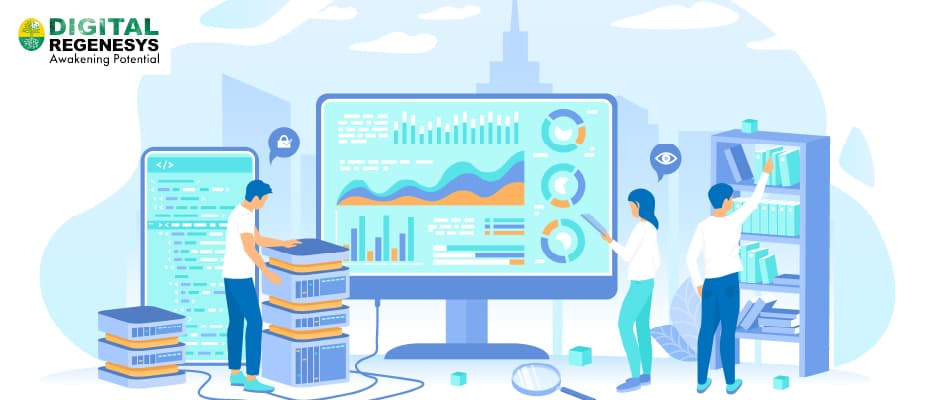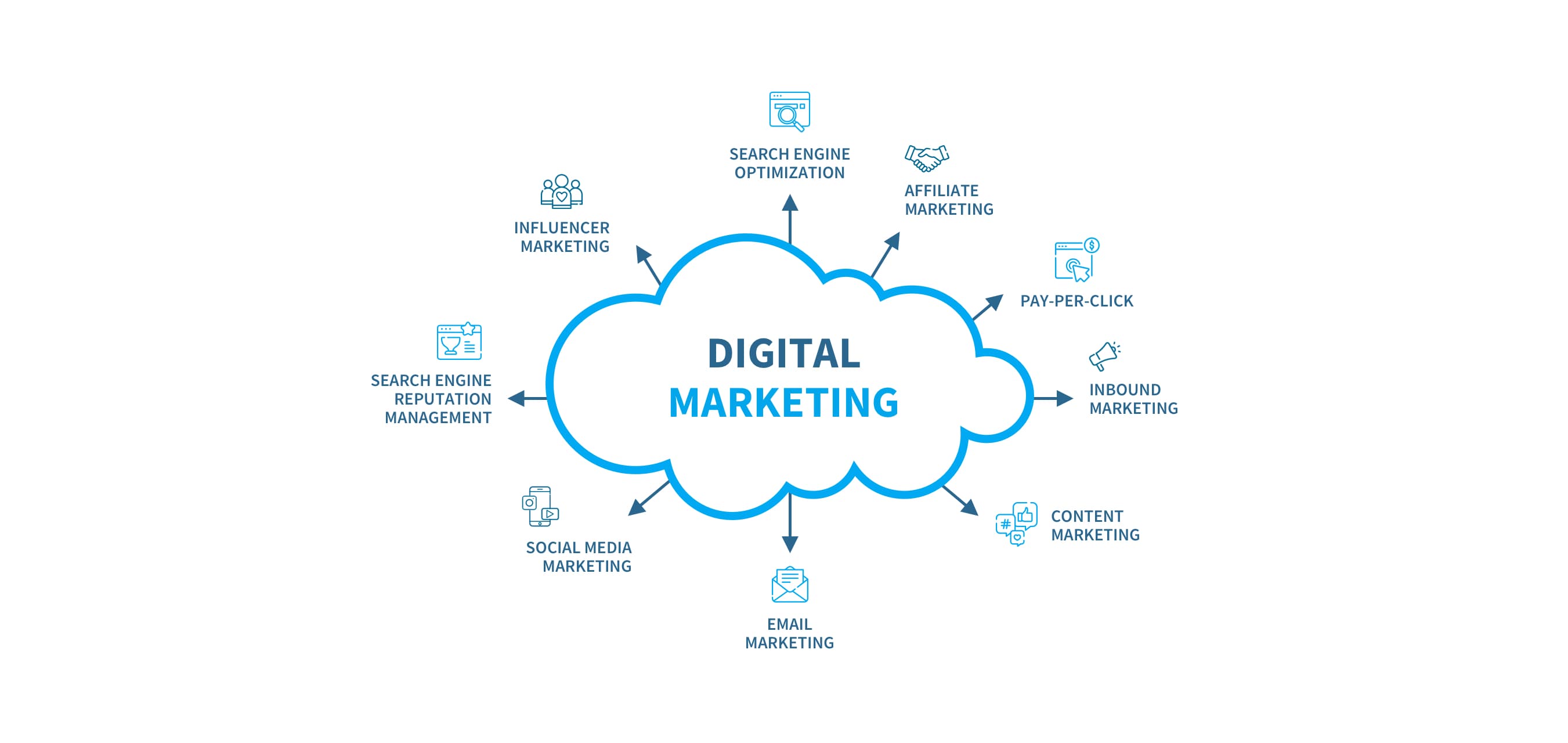What Are the Different Types of Data & Business Analytics Models?
Data is undoubtedly a vital asset for any business, including finance, healthcare, social media, energy, retail, real estate, and manufacturing. Analysing this data is highly important for businesses, as the data itself is meaningless and unstructured. Therefore, understanding data and business analytics and its various types is essential since they allow us to derive valuable conclusions from this data and determine what it represents and how to use it.
The world of data and business analytics is extensive and diverse, with a wide range of models designed for different needs and situations. Each model plays a unique role in utilising data effectively. Do you want to know how? This article will examine the various data and business analytics models, their features, uses, and importance in achieving organisational success. So, let’s start!
Table of Contents
- What is Data and Business Analytics?
- What are the Types of Data and Business Analytics?
- Conclusion
- Frequently Asked Questions
What is Data and Business Analytics?
Business analytics is the process of analysing past data and gaining fresh insight to enhance strategic decision-making through the use of statistical techniques, skills, tools, and practices. The data consists of raw facts and observations from different sources, such as transactions and customer interactions. This subset of data management systems uses business intelligence and various techniques, including data mining, statistical analysis, and predictive analytics, to interpret and utilise data efficiently. But how do data and business analytics help businesses?
Through analytics, companies can discover hidden patterns and correlations in large datasets, gaining valuable insights into customer behaviour, market trends, operational efficiencies, and strategic opportunities. These insights are crucial for making informed decisions that improve performance, reduce risks, streamline processes, and promote innovation.
As a result, data and business analytics enable organisations to adjust to market changes, take advantage of new trends, and stay competitive in today’s complex and interconnected business environment. So, in the next section, let us explore the key types of data analysis.
What are the Types of Data and Business Analytics?
Data and business analytics have different models implemented in different data analysis stages. Each type is an essential building block for a business since it offers different insights into the data, informed recommendations, and helps businesses make better decisions. Though all these forms of business analytics work well on their own, they have very powerful impacts when combined.
So, here are the different types of data and business analytics:
-
Descriptive Analytics:
Descriptive analytics is crucial for analysing historical data and gaining insights into past performance and trends. It answers the question of “what happened?” and helps businesses understand their data landscape. In other words, it is the most basic form of analytics used to summarise the results and understand what is happening. It offers data that makes it easier to comprehend how the company performs overall on an aggregate level.
Key Techniques Used:
- Data Aggregation
- Data Visualisation
- Key Performance Indicator (KPI) Tracking
Examples of Descriptive Analytics:
- Summarising past events, exchange of data
- Reports on traffic, engagement and demand trends
- Examining financial statements to give a comprehensive view of a company’s financial health.
- Diagnostic Analytics:
When looking at historical data, diagnostic analytics aims to uncover why it happened. This involves digging deeper into the data to find patterns, correlations, and cause-and-effect relationships. Diagnostic analytics helps organisations pinpoint the root causes of their problems or successes by asking questions like ‘Why did it happen?’ This allows them to make specific improvements and optimisations.
Key Techniques Used:
- Regression Analysis
- Root Cause Analysis
- Drill-Down Reporting
Examples of Diagnostic Analytics:
- Examining market demands
- Understanding customer behaviour to improve products and user experience
- Enhancing internal company culture by identifying factors contributing to employees’ desire to stay or leave.
-
Predictive Analytics:
Predictive analytics goes beyond data analysis. It uses historical data and statistical algorithms to predict future outcomes. It uses different data analysis methods to help businesses forecast trends, behaviours, and potential events. This tool allows organisations to make informed decisions, reduce risks, and take advantage of opportunities.
Key Techniques Used:
- Machine Learning
- Predictive Modelling
- Neural Networks
- Data Mining
Examples of Predictive Analytics:
- Categorising customers based on shared characteristics and preferences to tailor marketing strategies and product offerings
- Predicting customer buying behaviour
- Detecting fraud to ensure the security of financial institutions and their customers.
- Optimising inventory to anticipate demand trends.
- Prescriptive Analytics:
Prescriptive analytics is about making data-driven decisions that predict future outcomes and provide recommendations on optimising those outcomes. This type of analytics suggests the best actions based on specific goals, limitations, and preferences. It offers practical insights by addressing the question of “what should we do?”. As a result, prescriptive analytics empowers businesses to make informed, strategic choices that enhance value and effectiveness.
Key Techniques Used:
- Optimisation Algorithms
- Simulation Techniques
- Game Theory
- Decision-Analysis Methods
Examples of Prescriptive Analytics:
- Improving product management by surveying customers and running tests with a product
- Tracking fluctuating manufacturing prices
- Determining the best course of action in a given situation
- Finding potential opportunities than competitors
-
Cognitive Analytics:
Cognitive analytics uses advanced technologies like artificial intelligence, natural language processing, and machine learning to interpret unstructured data. It collects and discovers insights from real-time data sources such as text, images, audio, and video available. The goal is to understand and imitate how a human brain decides and comes with a system or computer that does the same.
Key Techniques Used:
- Sentiment Analysis
- Speech Recognition
- Deep Learning
Examples of Cognitive Analytics
- Accessing data sources such as images, text documents, emails, and social posts.
- Virtual assistants like IBM Watson and Apple’s Siri comprehend and reply to natural language queries.
- Recommendation systems like Netflix utilise machine learning to tailor content recommendations according to user preferences and behaviour.
Understanding each of these data analysis techniques allows you to use a suitable model that aligns with your business needs and requirements. In short, these models help you analyse the data, predict trends, and make the most valuable decisions.
Conclusion
Data and business analytics are essential for today’s businesses in various sectors. They help businesses use data effectively to make strategic decisions and attain success. With different data analysis models, such as descriptive, diagnostic, predictive, prescriptive, and cognitive analytics, businesses can gain valuable insights from their data, find hidden patterns and connections, and make informed choices that improve performance, minimise risks, and encourage innovation.
As a result, in today’s ever-changing business environment, organisations must comprehend and incorporate analytics models to remain competitive, adjust to market shifts, and capitalise on emerging prospects. By adopting data-driven strategies, companies can discover fresh opportunities, enhance efficiency, and foster lasting expansion in the digital era.
Want to enhance your skills in data and business analytics? Enrol in Digital Regenesys’s Data and Business Analytics Course to analyse data and make informed business decisions without coding knowledge. Apply Now!
FAQs – Frequently Asked Questions: What Are the Different Types of Data & Business Analytics Models?
Q1) What are the different types of analytics?
The different types of analytics include:
- Descriptive analytics: Summarise historical data to provide insights into past performance and trends.
- Diagnostic analytics: Find reasons behind past outcomes by identifying patterns and correlations in data.
- Predictive analytics: Forecast future outcomes and trends, enabling proactive decision-making.
- Prescriptive analytics: Recommend the best course of action based on specific objectives and constraints.
- Cognitive analytics: mimic human decision-making processes and interpret unstructured data from various sources.
Q2)What is the importance of data and business analytics for businesses?
Data and business analytics play a vital role in businesses by extracting valuable insights from data, enabling informed decision-making, improving performance, reducing risks, streamlining processes, and fostering innovation.
Q3)How can I improve my skills in data and business analytics?
If you’re looking to improve your data and business analytics abilities, consider signing up for courses or training programmes from trusted institutions. Digital Regenesys provides a Data and Business Analytics Course specifically created to assist people in analysing data, making well-informed business choices, and gaining practical insights without the need for coding skills. Apply now to take the first step in upgrading your analytical abilities and staying ahead in the ever-evolving business world.
Q4)What skills are required to perform data and business analytics effectively?
In order to excel in data and business analytics, one must possess both technical skills, like being adept at statistical analysis and data visualisation tools, and domain knowledge relevant to the industry or business at hand. Moreover, critical thinking, problem-solving, and strong communication abilities are crucial for understanding data and conveying findings clearly.
Q5)How can businesses get started with implementing analytics in their operations?
First, businesses should identify their specific goals and objectives for using analytics. They should then choose the most appropriate types of analytics for their requirements and invest in the technology and expertise needed. Besides, setting up well-defined procedures for collecting data, analysing it, and making decisions based on the results is crucial. Additionally, it is important to constantly assess and refine analytics projects to enhance performance and achieve success.















